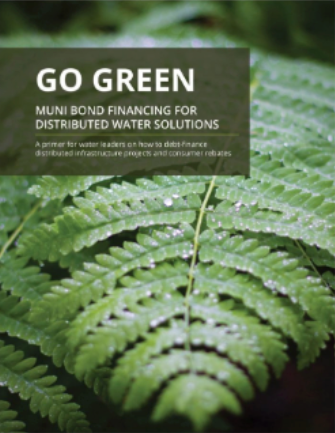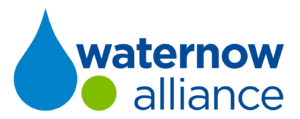We all know that we have to do more to conserve and reuse water, avoid stormwater flooding, prepare for sea level rise, mitigate drought, and restore the environment. And we have to do it all within the constraints of keeping water accessible and consumer rates affordable. To meet these challenges, we will have to be innovative and explore creative solutions that go beyond the current standards of building more pipes, pumps, reservoirs, and treatment facilities. Research shows that “distributed” infrastructure (DI) can be a significant part of the solution as a complement to the traditional, centralized infrastructure that people are more familiar with.
 Distributed infrastructure refers to technologies and practices that are decentralized and thus distributed across many locations, like businesses, homes, streets, and parks. In contrast to centralized infrastructure, which generally refers to large, built assets and facilities that are owned and operated by a utility (like a treatment plant), DI is often not under the direct control of utilities, because it resides on private property or property that is owned by other public entities. DI can include business or residential efficiency and water quality measures, reuse systems, consumer information technology, and various types of green infrastructure.
Distributed infrastructure refers to technologies and practices that are decentralized and thus distributed across many locations, like businesses, homes, streets, and parks. In contrast to centralized infrastructure, which generally refers to large, built assets and facilities that are owned and operated by a utility (like a treatment plant), DI is often not under the direct control of utilities, because it resides on private property or property that is owned by other public entities. DI can include business or residential efficiency and water quality measures, reuse systems, consumer information technology, and various types of green infrastructure.
Many, if not most, water utilities nationwide have implemented various rebate and financial incentive programs to encourage consumer adoption of DI measures, but these represent only a small part of utility investment, far below the level of potential benefit these DI programs can offer in terms of local water resource resilience and reliability. A primary barrier to significant investment has been whether and to what extent public water resource agencies can access their traditional, robust capital financing tools – primarily tax-exempt municipal bonds – to scale up funding for DI programs. For the most part, this comes down to how these DI programs and their resulting assets are treated in accounting rules.
This publication is the culmination of years of work to investigate how accounting rules can support utility investment in distributed and green infrastructure at the scale required to achieve meaningful results. In 2010, Earth Economics began working with a group of drinking water utilities and found that accounting standards do not adequately address natural assets such as forested watersheds and aquifers. This presents a clear barrier to debt-financing this critical infrastructure2. Earth Economics’ ongoing research and awareness-raising activities for the GASB, including technical inquiries and presentations to both the GASB and their Advisory Council (GASAC) in and 2014 and 2016, led to the report “Natural Resources Accounting: A Path Forward for the GASB,” with short- and long-term recommendations for how the GASB can better address natural resources in accounting standards. In the meantime, Ceres had further articulated the importance of bond-financing distributed infrastructure in their 2014 report, confirming the importance of accounting treatment.
In 2016, Earth Economics and the WaterNow Alliance joined efforts to focus on what could be done in the near term. We found accounting standards currently in place that allow utilities to debt-finance these investments if they choose to do so. The Governmental Accounting Standards Board (GASB)7 has established rules that permit rate-setting public entities to create an “asset” under the condition that they set rates to cover the cost of a program over time—even if those programs do not result in traditional assets that are owned and operated by those agencies. These are referred to as “regulatory assets.” Once you have an asset, you can typically issue revenue bonds to pay for it. That means you can use a funding mechanism that is well known to your agencies to invest in new and innovative water strategies at a much broader scale. In using this funding stream, you can rethink these distributed systems and make them part of your long-term, comprehensive capital planning and budgeting.
This approach has been permitted since at least 2010, but there was some uncertainty as to whether it could be used for distributed infrastructure. In May, as a result of joint efforts by Earth Economics, WaterNow Alliance, and our valuable partners, GASB issued its 2018 Implementation Guide to clarify that distributed infrastructure could indeed be funded through the “regulated operations” approach.
This primer was designed to walk you through the process of how you can use GASB standards to support new and non-traditional programs and projects. We hope that you find this material helpful, and we look forward to partnering with you as we work toward a more sustainable and resilient water future.



A WaterNow Alliance Initiative
Whether you have a project that needs support or are just dipping your toe in, our team of experts is here to help.